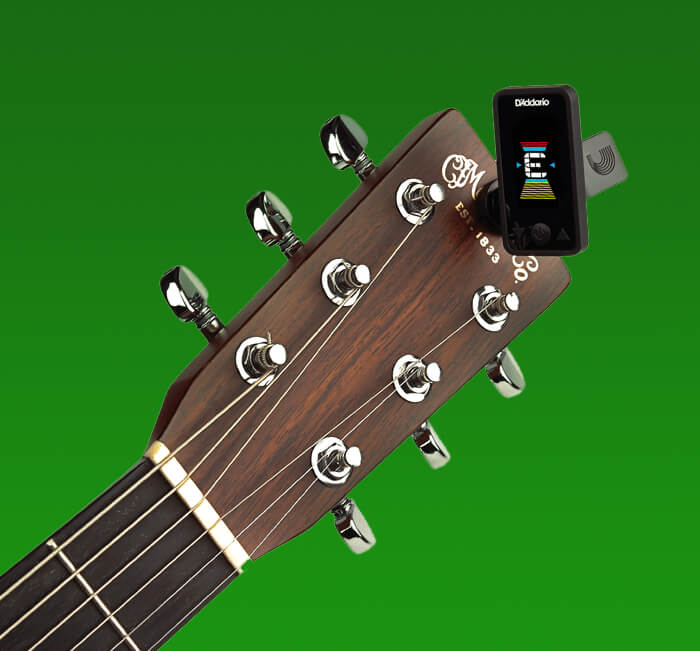BETTER ELECTRIC GUITAR TUNING
By Mike Christainsen
As electric guitar teachers, we may be inclined to teach tuning right out of the gate. But there is a time and place for everything — and teaching your electric guitar student how to tune in the first lesson is neither.
Matching Pitch
Regardless of the method of tuning used, it's a prerequisite that the student first learns to match pitches. It's imperative that they begin by learning to identify when a pitch is higher or lower than another. You could start your students out by playing two pitches, one being dramatically higher or lower than the other, and have the students tell whether the first pitch is higher or lower than the second.
Keep playing two pitches and have one of them be stationary. Keep bringing the second pitch closer to the first, until they match. Eventually, the student's ear will be trained to hear differences in pitches, even when they are close.
Headstock Tuners
Another method of tuning is to use a headstock (clip on) tuner. This is a fantastic device to have the students use early on. D'Addario makes headstock tuners that are durable and easy to use. Headstock tuners have become so commonplace and user friendly that I won't go into how to use them. Walk your student through the instructions.
When using the headstock tuner, the student needs to learn to hear (or see on the tuner) when the pitch is too high or too low. The visible tuner allows the student to see when the correct pitch is being approached. If the pitch of the string is too low, have the student tighten the string until the correct pitch is achieved. However, if the pitch is too high, do not loosen the string to the desired pitch and stop. You should never bring the string down to pitch. Go lower and then tighten it (bring it up) to the pitch. Hence the term "tune up." This rule applies to all methods of tuning.

Tuning without a Tuner
Eventually, it is also recommended that the students learn to tune the guitar to itself without the aid of a tuner. This is done by fretting the out-of-tune string and then adjusting the pitch of that string until it matches an in-tune open string. For example, match the second string's fifth fret to the in-tune open first string. Most method books show how this is done and the process can also be found online.
There are other methods of tuning, such as matching harmonics, but the techniques mentioned here work well for beginner students and will provide your students with the tools necessary to learn to tune accurately and quickly.


